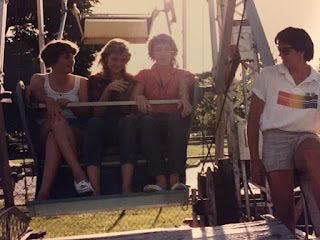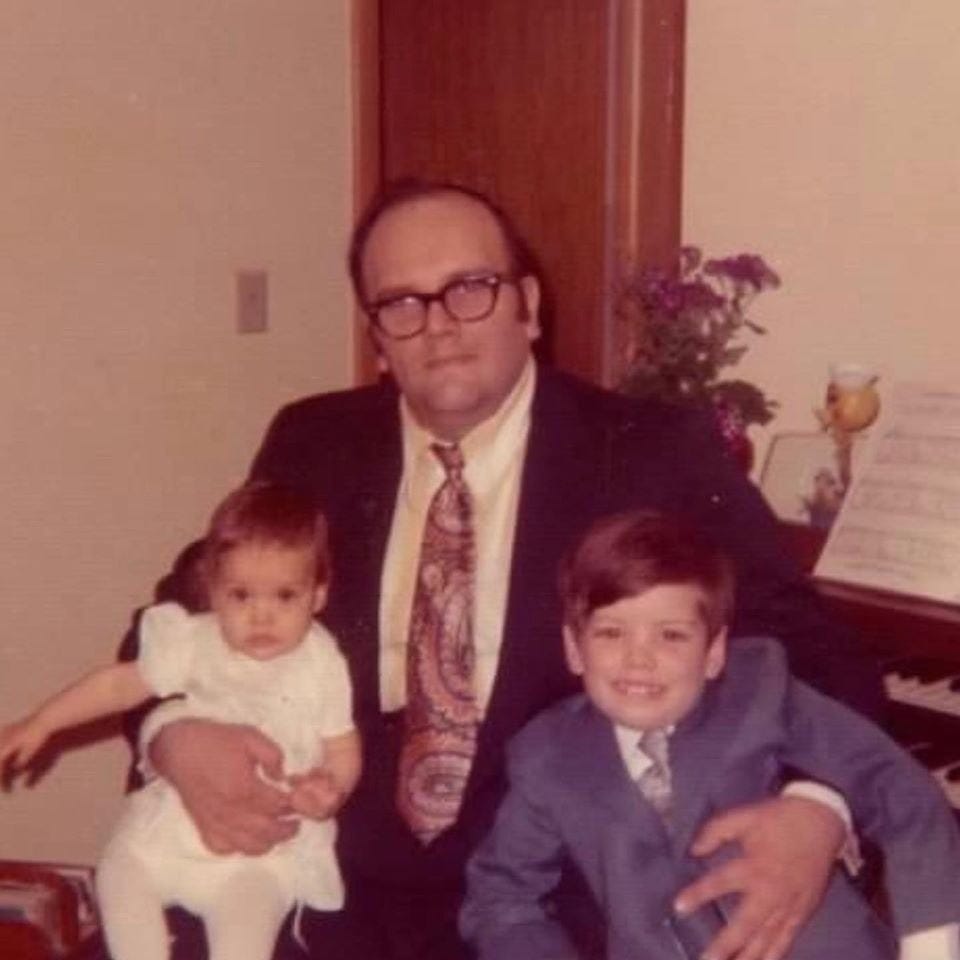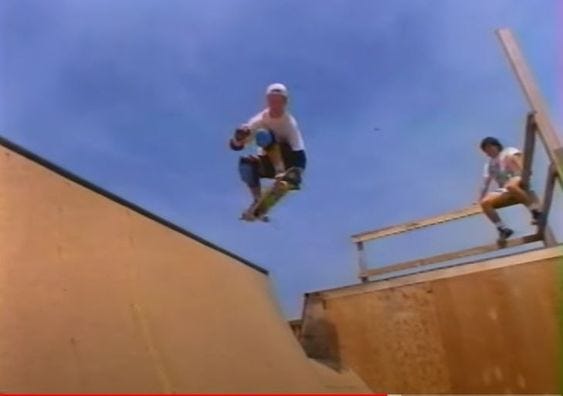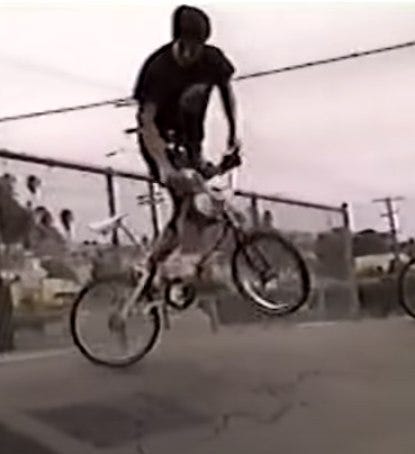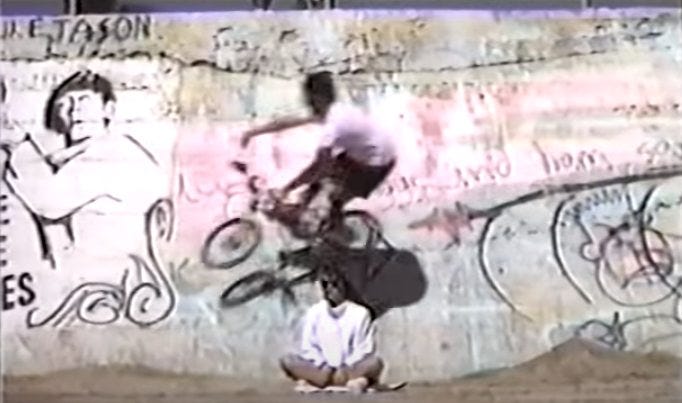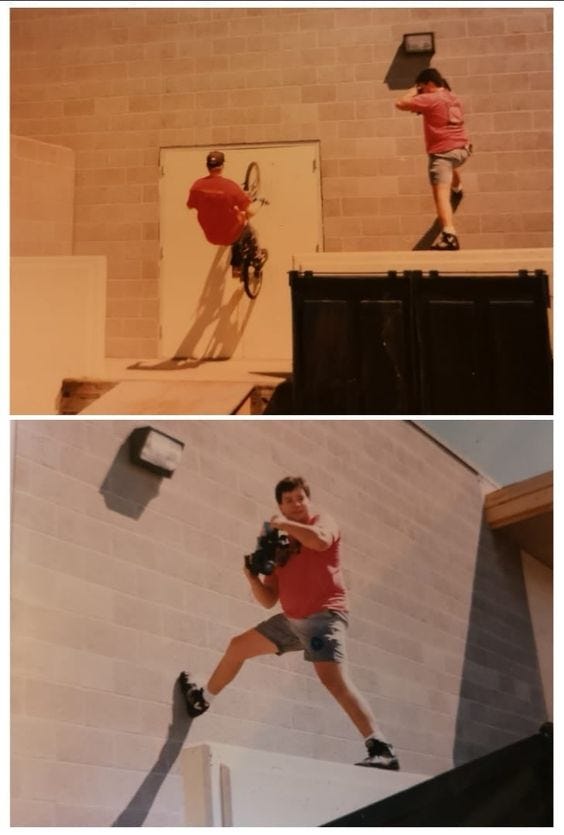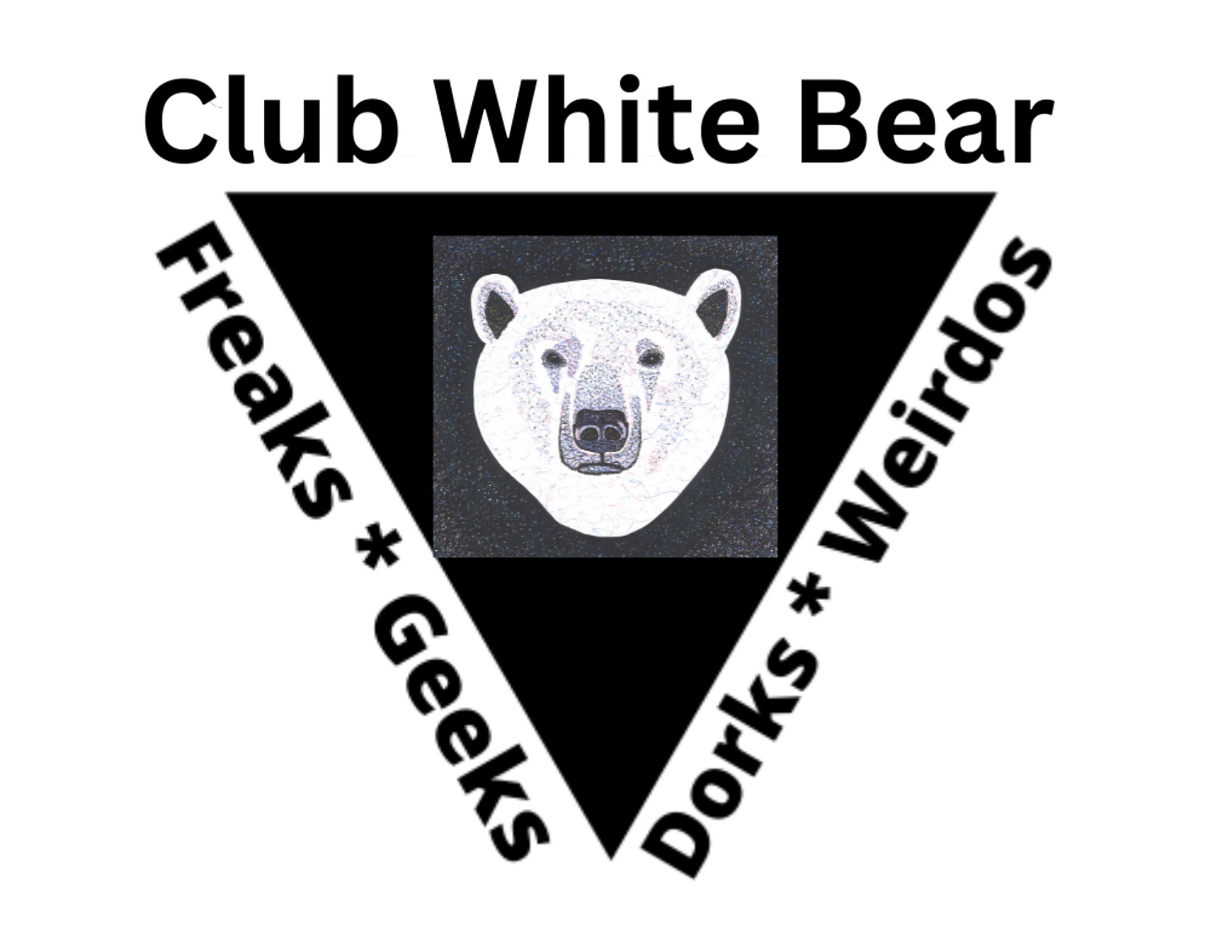Who the heck is Steve Emig?
It's 2024, and I'm a 58-year-old blogger/writer/Sharpie marker artist who has been self-publishing my writing since 1985
That’s me on the right, running the Ferris wheel at the The Fun Spot. My summer job in 1984 and 1985, The Fun Spot was a tiny amusement park inside of Julia Davis Park, close to the zoo, in Boise, Idaho. The summer of 1985, I turned 19, and was manager of The Fun Spot, pulling in $3.15 an hour while overseeing 6 rides, a miniature golf course, a food stand, and 12-13 employees. The pay was low, but it was a lot of responsibility and good experience. That’s three of my co-workers, Kim, Michelle, and Pam, on the ride. Photo by another co-worker, Vaughn K.
I’m re-writing this post, and it’s still under construction…
My name is Steve Emig, and this is my Substack site that you’ve found somehow. These days I’m a ridiculously prolific blogger and writer, and I also do a bunch of Sharpie artwork that I call #sharpiescribblestyle. As I rewrite this post in the fall of 2024, I’m 58 years old, and currently homeless, living in the San Fernando Valley, north of Los Angeles, California.
I don’t drink alcohol, and I don’t do any drugs, legal or illegal. I’ve struggled in and out of homelessness since 1999, and have spent about 17 years homeless total. My first extended bout of homelessness came right after I started driving a taxi in late 1999. I was working full time as a taxi driver, or doing other jobs, for about 8 of the years I’ve been homeless. I just haven’t been able to get back to making a decent living since working as a taxi driver in the 2000’s. OK, that’s it for the homeless disclaimer part.
My sister Cheri, my dad, Tom Emig, and me, in Massillon, Ohio, in late 1972 or early 1973. Look at my dad’s tie. Wow. That’s some 1970’s style for you. Photo by Kathy Emig.
I grew up in Ohio, moving around to a new house nearly every year. My family lived in several houses in Ohio in the late 1960’s and 1970’s as I grew up. We had a brief stop in Fort Wayne, Indiana, too, but I was about 4, and don’t remember much from there. In that era, the Midwest factories were still going strong, and many of them had two or three shifts going. The American Middle Class was strong during my childhood years. We had rotary dial telephones, no cell phones, no computers, and no video games, back then in the Dark Ages. As kids, we played outside most of the time, often wandering the local woods or along a creek. Most people expected me to grow up to be a draftsman/engineer like my dad.
I was super shy as a kid. I was pudgy, pretty smart, had buck teeth, and and couldn’t say my “R’s” or “S’s” well until I was about 11 or 12. I sucked at sports, got picked on a lot, read a lot of books, and liked to draw.
In 1979, a rumor surfaced that my dad’s company might get bought out and shut down, so he found a new job in New Mexico. After I finished 8th grade, we moved to Carlsbad, New Mexico. I went to 9th grade there, and got a crash course in both Latino and Southwestern culture. Then a rumor circulated that his new company might get bought out and close down, so my dad started sending resume’s out again.
We moved to Boise, Idaho in June of 1981. The new job was with a large engineering firm, and we lived in Boise for about four years, though we lived in two houses and a mobile home during that time. I went to Boise High School all three years, and graduated in 1984, part of Boise High’s 100th graduating class.
This is pro skater, Ken Park, airing over the 7 foot spine, at Tony Hawk’s Fallbrook ramp, in 1989. That’s me sitting on the rail in the background. I was Don Hoffman’s assistant that day, and shot some video of Ken, for Vision Skateboards’ Barge at Will video (44:50). Don was the founder of Unreel Productions, the video production company owned by Vision Skateboards and Vision Street Wear clothing. That year, 1989 was the peak of the 1980’s wave of skateboarding. The popularity wave crashed. Skating, and BMX freestyle, my sport then, “died" and went underground until 1995. That year, ESPN jumped into the action sports world with The Extreme Games. Renamed The X-Games in 1996, the worldwide TV coverage brought attention and major sponsors in to the action sports world for another wave of popularity. This was Ken’s best video part of the 1980’s era, and it was cool to see him knock his best stuff out. Tony Hawk wasn’t there that day, and has no idea who I am, just to be clear. I’ve seen Tony at events, but never actually met and talked to him.
After my sophomore year of high school ended, our family moved to a brand new mobile home, set up a few miles outside of Boise, in a trailer park known as Blue Valley by the residents. It was there, in the trailer park, that I got really into BMX bike riding. There wasn’t much else to do out there, there weren’t enough teenage girls to go around, so us teen guys rode our BMX bikes on some small jumps every evening. We began pushing each other to jump better, and we all started racing BMX at the end of that year, and began again the next spring. I raced BMX on and off all through 1983 and into 1984, but liked the emerging sport of BMX freestyle, trick riding, much better. BMX freestyle became my life in 1983-1984.
My parents managed to save enough money during the year in the double wide to buy a house back in town. So in June of 1983, after my junior year of high school, we moved back into Boise, into a nicer house in the same subdivision we originally lived in. As the year passed and I entered my senior year of high school, I got more into the emerging sport of BMX freestyle, or trick riding on bikes. Everyone, except my best friend, thought that I was an idiot for doing that.
I finally grew several inches during my junior year, and thinned out. Suddenly I wasn’t chubby anymore, but I was still deathly shy when it came to girls. I ran across country my senior year, poorly. My best time was 22:10 for a 5 K (3.1) miles. I made it through the whole season, and they gave me a school letter for cross country, so I officially became letter man, a jock, sort of. But BMX was far more fun.
Me, with a bank trick in San Diego, in 1990. This is a 270 bunnyhop onto the top of the bank, to 90 bunnyhop, to rollback to 180 out. Video still from my 1990 BMX video, The Ultimate Weekend (36:19).
My family, generally, wasn’t good at saving money, though they managed to buy that house. I worked a couple poor paying part time jobs while in school, mostly setting trap at a shooting range, and just made a little pocket money. When it came time to think about college, there was no money to be found, and I didn’t have a strong direction in life, so I took a year off. Then another year. I never did go to college at all.
I worked the summers of 1984 and 1985 at the Boise Fun Spot, a tiny amusement park, and made less than minimum wage (which was legal in Idaho then). I also joined the only BMX freestyle team in Idaho, with guys named Justin and Wayne, and we rode in parades and did a few local shows, that Justin’s mom set up for us.
My dad got laid off in the spring of 1985, and found a new engineering job in San Jose, California. My mom, dad, and sister moved to California that summer. I rented a room at my best friend’s house in Boise, and finished the summer working at The Fun Spot. Then I drove to San Jose solo, in my gigantic, 1971 Pontiac Bonneville, and moved back in with my family.
Wall ride over my sister Cheri’s head, in 1990. The location is the Blues Brothers Wall in Huntington Beach, California. To the left of the Three Stooges mural was a mural of the Blues Brothers, that’s where the wall got its name. This is another video still from The Ultimate Weekend, I have very few photos of my years of riding, and only a bit of video.
With a $15 typewriter I bought at the swap meet, and my Kodak 110 Instamatic camera, I published my first Xerox zine about BMX freestyle. I made it in September 1985, to meet other riders in San Jose and the Bay Area. It worked, and within a month, I met pros, like Dave Vanderspek, Maurice Meyer, Robert Peterson, along with a bunch of really good Bay area amateurs. I worked nights at a Pizza Hut, becoming the night shift supervisor. I put out eleven issues of my zine over the next year. That led to a chance to write a freelance article for FREESTYLIN’ magazine in the spring of 1986. That led to getting offered a full time job at Wizard Publications, home of BMX Action and FREESTYLIN’ magazines. A month after my 20th birthday, I got on a plane in San Jose, with my bike, a suitcase, and $80. I flew to LAX to begin my new life in the BMX industry.
While we generally got along, I wasn’t the right fit for the crew at Wizard Publications, and got laid off at the end of 1986. I soon found a job as newsletter editor and photographer for the American Freestyle Association’s newsletter. Hired by Bob Morales, the young BMX freestyler and entrepreneur, I moved down to Huntington Beach, center of the action sports universe at that time.
Meanwhile Wizard found a 17-year-old kid named Spike Jonze to hire. He definitely was the right fit for that crew, and went on to all kinds of success. Meanwhile, I soon became a local rider at the Huntington Beach Pier, hanging with freestyle skateboarders, like Pierre Andre’ and Don Brown, and the local posse of young street skaters which included Mark Gonzales, Ed Templeton and others. While I wasn’t making much money, I was in the middle of some of an amazing culture of surfing, skateboarding, and BMX. I got to learn a whole bunch of new skills working at the AFA, including how to produce low budget BMX videos. I produced and directed six simple contest videos for the AFA, which led to a job at Unreel Productions, the Vision Skateboards video company.
Shooting video of Keith Treanor, with my S-VHS camera, in 1991, at Huntington Beach High School. Photo by UK rider Alex Leech. Keith is doing a wall ride fakie on the door, in that top pic. Keith was a young, hungry rider who moved to Huntington Beach from New Jersey, and was always down to go ride. He became the stand-out rider, along with John Povah, in my 1990 video, The Ultimate Weekend. That put him on the map as a rider, and he soon became a solid pro street rider.
I was basically a production assistant to everyone at Unreel, and spent most of my time in a tiny room full of several types of video machines. Day after day, I mostly made copies of videos they produced for various people throughout the Vision empire. Vision owned Vision, Sims, and Schmitt Stix skateboards, Sims Snowboards, and Vision Street wear clothes, which got ridiculously popular, launching the concept of “street wear.” There was a lot going on, Vision was the biggest collection of incredibly talented young people I’ve ever seen, until I later worked locally for Cirque Du Soleil. As part of Unreel, I got to see and meet many of these people, and learn from them. Now, I didn’t realize at the time, and I was depressed and complaining about life a lot, in general. But nearly every night, I was out riding my BMX bike, practicing flatland and doing a little jumping and a lot of street riding. On the weekends, if there wasn’t a contest somewhere, I was riding for crowds at the Huntington Beach Pier, with a few BMX freestylers and the freestyle skaters. I once figured out that I rode in front of at least 140,000 people, 100 to 500 at a time, at the H.B. Pier, between 1987 and 1992. So while I didn’t become a pro rider and tour around the world, I showed thousands of people what BMX freestyle was.
Video still of Kele Rosecrans snapping ollies on banks at a school in Orange, CA, also from Barge at Will. That’s me in the background, with the big, 35 pound, Sony Betacam over my head, trying to get a cool angle. Video shot by Marty “Jinx” Jiminez.
When the 1980’s wave of skateboarding began to collapse in late 1989, Vision ran into troubles. In a nutshell, it grew too fast, and wasn’t ready for a big downturn. Unreel Productions was dissolved in January of 1990, and the two lowest people on the staff, myself and our female production coordinator, got moved to Vision’s main office in Santa Ana. She found a “real” TV job in about a month, and I sat in the office alone for six months. I had almost nothing to do, and I don’t work well when bored. I quit in late June, 1990, and then got hired to drive the rig for a three week skateboard tour to Atlanta and back. I then worked odd jobs in video, and focused on self-producing my own BMX freestyle video. I was one of the first three BMX freestylers, a long with Eddie Roman and Mark Eaton, to produce full length freestyle videos. I spent $5,000 of my own money producing The Ultimate Weekend, and made about $2,500 back over several months. I wound up $7,000 debt, after not finding a “real” job, and living off of my credit cards for several months, like an idiot.
As the 1990’s long recession took hold, I was scraping by financially. I wound up working with my formal Unreel co-worker again. She got me a gig as a production assistant on the 1991 monster truck and supercross season TV shows. I commuted to North Hollywood for about three months in early 1991, stumbling into the TV industry.
That’s the story of how I stumbled into the BMX and skateboard industries during a big wave of 1980’s popularity, and then into the TV production world, again by accident.


